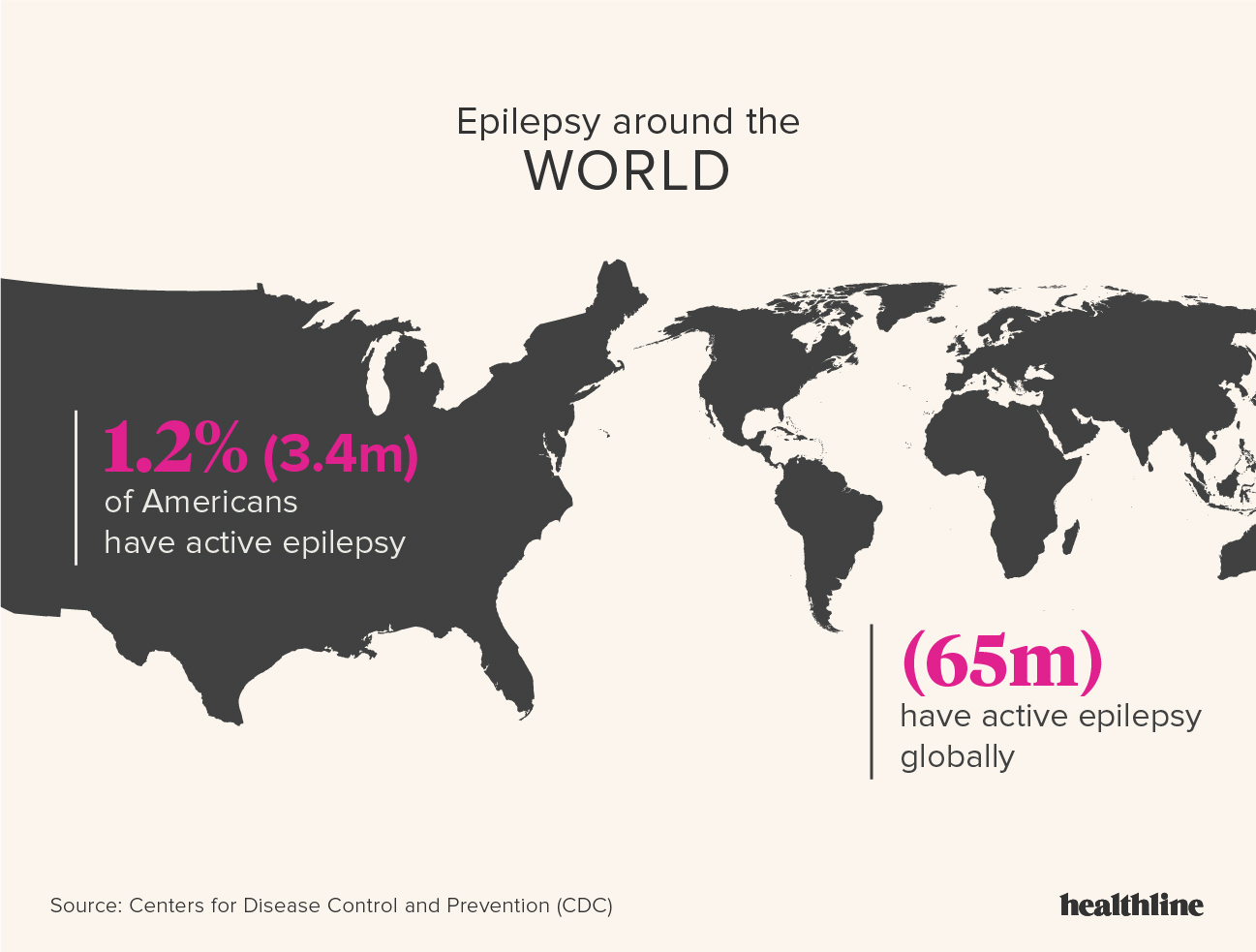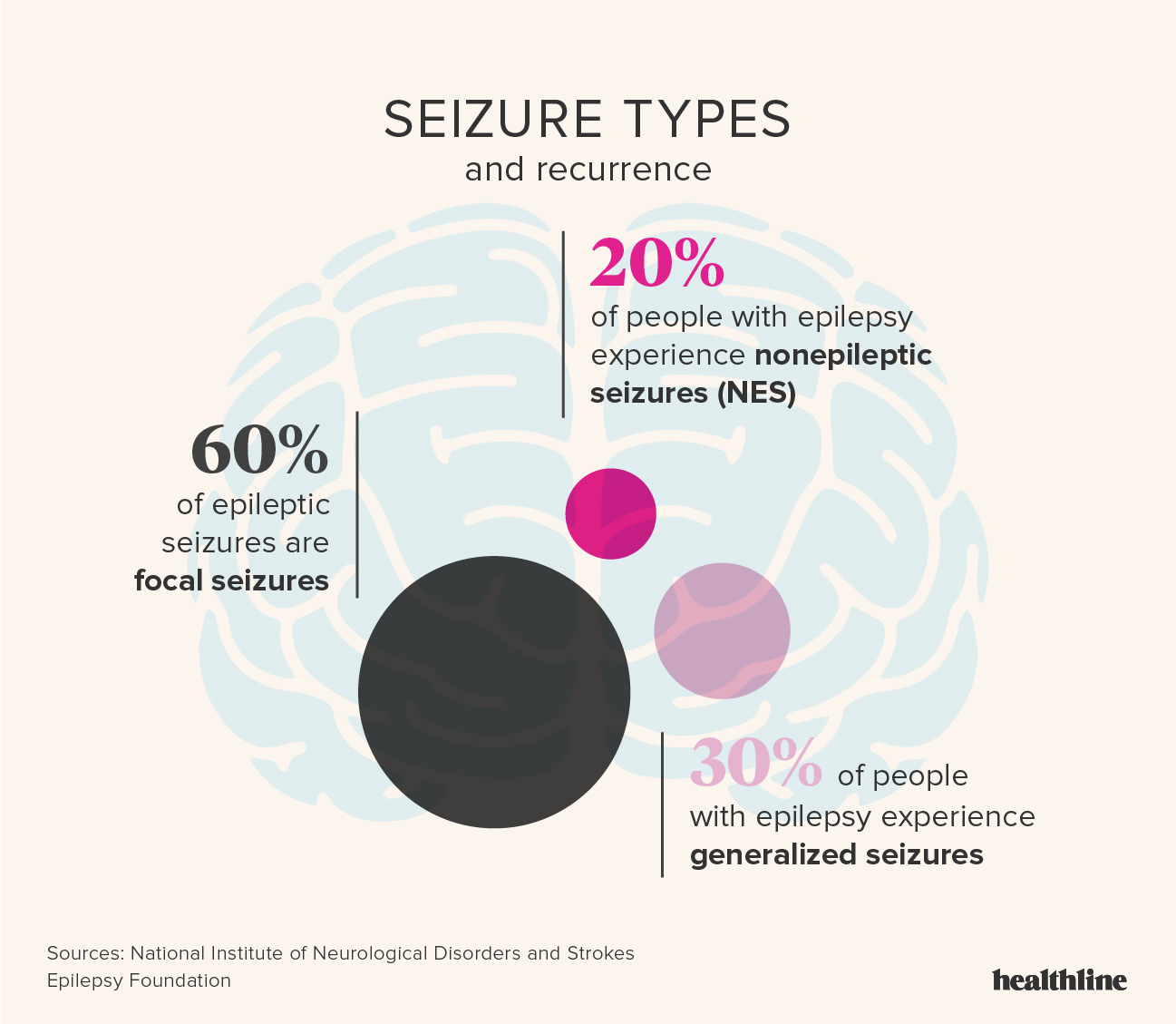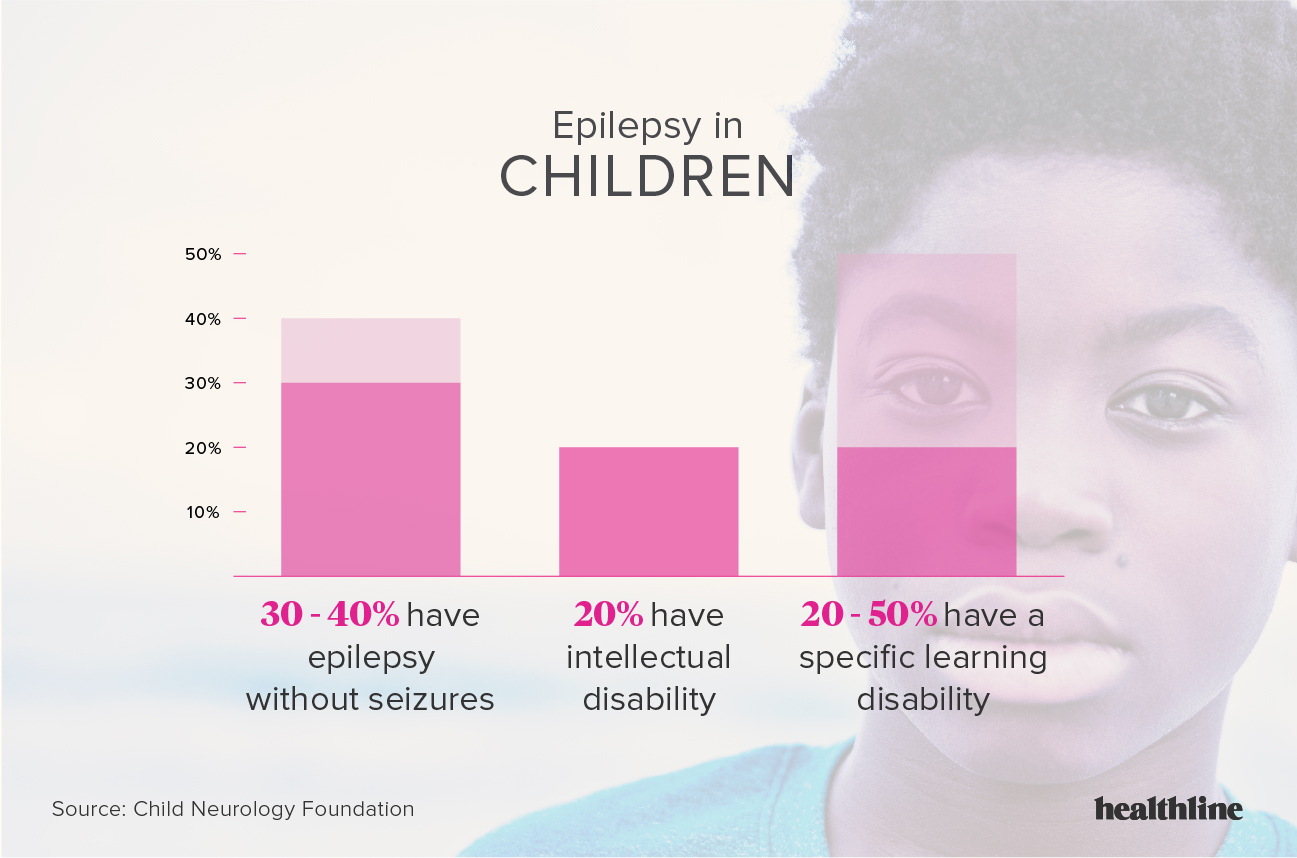49 Epilepsy Statistics, Prevalence & Demographics
In this roundup of Epilepsy statistics, we will explore some of the most important statistics and facts about epilepsy.
Key Epilepsy Statistics
- Approximately 1 in 26 Americans will develop epilepsy in their lifetime.
- Epilepsy affects people of all ages, but it is most commonly diagnosed in children and older adults.
- In developing countries, up to 90% of people with epilepsy do not receive adequate treatment.
- The risk of developing epilepsy is higher in people who have experienced a traumatic brain injury.
- About one-third of people with epilepsy do not respond to medication and require alternative treatments such as surgery or dietary therapy.
- Women with epilepsy may experience more seizures during pregnancy, and certain anti-epileptic drugs can increase the risk of birth defects.
- People with epilepsy are at increased risk of accidents and injuries, including falls, burns, and drowning.
- The cost of treating epilepsy in the United States is estimated to be over $15 billion per year.
- In many countries, stigma surrounding epilepsy prevents people from seeking medical care or participating fully in society.
- People with epilepsy are more likely to experience unemployment and poverty compared to those without the condition.
- Certain genetic mutations are associated with an increased risk of developing epilepsy.
- In some cases, seizures can be triggered by specific stimuli such as flashing lights or loud noises.
- Epilepsy can have a significant impact on cognitive function, including memory and attention span.
- Psychogenic non-epileptic seizures (PNES) are a type of seizure that are caused by psychological factors rather than neurological ones.
- Status epilepticus is a medical emergency that occurs when seizures last for more than five minutes or occur consecutively without recovery periods between them.
- African Americans are more likely to develop epilepsy than other ethnic groups in the United States.
- Depression and anxiety are common comorbidities among people with epilepsy, affecting up to one-third of patients .
- More than half of all cases of epilepsy have no known cause or identifiable underlying condition.
- Epilepsy is more common in low- and middle-income countries than high-income countries.
- The mortality rate among people with uncontrolled seizures is two to three times higher than the general population.
What Is Epilepsy?
Epilepsy is a neurological disorder that affects millions of people worldwide. It is characterized by recurrent seizures, which can vary in frequency and severity.
Epilepsy Prevalence
How Many People In The World Have Epilepsy?
According to the World Health Organization, epilepsy affects approximately 50 million people worldwide.
How Many People In The U.S. Have Epilepsy?
In the United States, it is estimated that 3.4 million people have epilepsy. This means that about 1 in every 100 people has epilepsy.

Impact on Quality of Life
Epilepsy can have a significant impact on a persons quality of life. Seizures can be unpredictable and disruptive, and people with epilepsy may experience social stigma and discrimination. They may also have difficulty finding employment or obtaining a driver's license.
Epilepsy and Mental Health
People with epilepsy are at increased risk of developing mental health conditions such as depression and anxiety. This may be due to the impact of seizures on the brain, as well as the social and emotional challenges that come with living with epilepsy.
Epilepsy and Mortality
While most people with epilepsy can live long and healthy lives, there is a small risk of sudden unexpected death in epilepsy (SUDEP). This is a rare but serious complication that can occur during or after a seizure.
Types of Epilepsy

There are many different types of epilepsy, each with its own unique characteristics and symptoms. Here are some statistics about the most common types:
- Focal seizures, also known as partial seizures, account for approximately 60% of all epilepsy cases.
- Generalized seizures, which involve both sides of the brain, account for approximately 30% of all epilepsy cases.
- Absence seizures, which typically occur in children and involve brief lapses in consciousness, account for approximately 10% of all epilepsy cases.
- Tonic-clonic seizures, also known as grand mal seizures, are the most well-known type of seizure and account for approximately 20% of all epilepsy cases.
- Myoclonic seizures, which involve sudden muscle jerks or twitches, are a less common type of seizure that occurs in approximately 5% of people with epilepsy.
- Reflex seizures are a rare type of seizure that occur in response to specific stimuli such as flashing lights or loud noises.
- Infantile spasms are a rare and severe form of epilepsy that typically occur in infants between three and twelve months old.
Understanding the different types of epilepsy is important for diagnosis and treatment. While medication can be effective in managing many types of seizures, some may require alternative treatments such as surgery or dietary therapy.
Epilepsy Prevalence By Race
Epilepsy affects people of all races, but its prevalence varies among different racial groups. According to the Centers for Disease Control and Prevention (CDC), African Americans have a higher risk of developing epilepsy compared to other racial and ethnic groups in the United States. The incidence of epilepsy is approximately 1.5 times higher in African Americans than in non-Hispanic whites. Additionally, African Americans are more likely to experience poor seizure control and have higher rates of mortality related to epilepsy.
The reasons for these disparities are complex and not fully understood. Possible factors include differences in access to healthcare, socioeconomic status, genetics, and exposure to environmental risk factors. More research is needed to better understand these disparities and develop strategies to address them.
It is important for healthcare providers to be aware of these disparities in order to provide appropriate care and support for individuals with epilepsy from all racial backgrounds. By addressing the underlying factors that contribute to these disparities, we can work towards reducing the burden of epilepsy on affected individuals and their communities.
Epilepsy Prevalence By Gender
Epilepsy affects people of all genders, but its prevalence can vary between males and females. According to the World Health Organization (WHO), epilepsy is more common in males than in females. However, the difference in prevalence may be influenced by age and geographic location.
In some countries, such as Nepal and Ethiopia, epilepsy is more common in females than in males. This may be due to factors such as gender-based violence, limited access to healthcare, and cultural beliefs about women's health.
It is important for healthcare providers to consider gender when diagnosing and treating epilepsy. Women with epilepsy may face unique challenges related to pregnancy, hormonal changes, and medication side effects. Additionally, they may experience stigma and discrimination related to their gender and condition.
By understanding how epilepsy affects different genders, we can provide more personalized care and support for individuals with epilepsy from all backgrounds.
Epilepsy Prevalence By Age
Epilepsy can affect people of all ages, but its prevalence varies among different age groups. According to the World Health Organization (WHO), epilepsy is most commonly diagnosed in children and older adults.

In children, epilepsy is a relatively common condition, with an estimated incidence of 1% to 2%. The risk of developing epilepsy is highest in the first year of life and decreases as children get older. However, some children may develop epilepsy later in childhood or adolescence.
According to the Child Neurology Foundation:
- Among children with epilepsy, 30% to 40% have only the disease without provoked seizures. They have normal learning capability,
- intelligence, and behavior.
- Around 20% of children with epilepsy also have an intellectual disability.
- Between 20% to 50% of children have normal intelligence but a specific learning disability.
In older adults, epilepsy becomes more common again. This may be due to age-related changes in the brain or an increased risk of underlying health conditions that can cause seizures. According to the Epilepsy Foundation, approximately one-third of people with epilepsy are over the age of 60.
It is important for healthcare providers to take age into account when diagnosing and treating epilepsy. Children with epilepsy may require different medications or dosages than adults, while older adults may need additional support to manage their condition alongside other health issues.
By understanding how epilepsy affects different age groups, we can provide more tailored care and support for individuals with this condition throughout their lives.
Epilepsy Risk Factors
While the exact cause of epilepsy is often unknown, certain risk factors can increase a person's likelihood of developing the condition. Some of the most common risk factors include:
- Brain injuries or infections: Head injuries, strokes, and infections such as meningitis or encephalitis can damage the brain and increase the risk of epilepsy.
- Family history: People with a family history of epilepsy are more likely to develop the condition themselves.
- Developmental disorders: Certain developmental disorders such as autism spectrum disorder and neurofibromatosis can increase the risk of epilepsy.
- Prenatal factors: Exposure to toxins or infections during pregnancy, low birth weight, and lack of oxygen during delivery can all increase a person's risk for epilepsy.
- Age: As mentioned earlier in this document, certain age groups are at increased risk for developing epilepsy.
- Gender: While gender itself is not necessarily a direct cause of epilepsy, hormonal changes related to menstruation or menopause may trigger seizures in some women.
- Drug or alcohol abuse: Substance abuse can damage the brain and increase the likelihood of seizures.
By understanding these risk factors, healthcare providers can work with patients to identify potential triggers and take steps to prevent seizures from occurring. For example, individuals with a family history of epilepsy may be advised to avoid certain activities that could trigger seizures, while those with developmental disorders may benefit from early intervention services to address underlying neurological issues.
Causes of Epilepsy
While the exact cause of epilepsy is often unknown, there are several underlying factors that can contribute to the development of this condition. Some common causes of epilepsy include:
- Brain damage or injury: Traumatic brain injuries, strokes, tumors, or infections such as meningitis or encephalitis can all cause damage to the brain and increase the risk of developing epilepsy.
- Genetics: In some cases, epilepsy may be caused by a genetic mutation passed down through family members. Certain genetic syndromes, such as Dravet syndrome or Lennox-Gastaut syndrome, are specifically associated with an increased risk of seizures and epilepsy.
- Developmental disorders: Certain developmental disorders such as cerebral palsy or Down syndrome can increase the risk of epilepsy due to underlying neurological issues.
- Prenatal factors: Exposure to toxins or infections during pregnancy, low birth weight, and lack of oxygen during delivery can all increase a person's risk for epilepsy.
- Infections: Certain infections that affect the brain, such as meningitis or encephalitis, can cause inflammation and damage to the brain tissue which may lead to seizures and epilepsy.
- Brain tumors: Brain tumors can disrupt normal brain activity and trigger seizures in some individuals.
- Stroke: A stroke occurs when blood flow to a part of the brain is interrupted, causing brain cells to die. This damage can sometimes result in seizures or epilepsy.
By understanding these underlying causes of epilepsy, healthcare providers can work with patients to identify potential triggers and take steps to prevent seizures from occurring. For example, individuals with a known genetic mutation associated with epilepsy may receive genetic counseling before starting a family in order to understand their risks and options for preventing passing on the mutation to their children.
Symptoms of Epilepsy
Epilepsy is a neurological disorder characterized by recurrent seizures. Seizures can manifest in different ways and may include:
- Convulsions: Convulsions are the most well-known type of seizure and involve sudden shaking or jerking movements of the body. During a convulsion, people may also lose consciousness, fall to the ground, or bite their tongue.
- Absence seizures: Absence seizures are more common in children and involve brief episodes of staring into space or appearing "zoned out." During an absence seizure, individuals may not respond to stimuli or engage in activities they were previously doing.
- Tonic-clonic seizures: Tonic-clonic seizures involve a combination of convulsions and loss of consciousness. During a tonic-clonic seizure, individuals may experience stiffening or rigidity followed by rhythmic jerking movements.
- Myoclonic seizures: Myoclonic seizures involve sudden muscle contractions that can cause a person to drop something they're holding or fall to the ground.
- Atonic seizures: Atonic seizures are sometimes called "drop attacks" because they involve sudden loss of muscle tone that can cause a person to suddenly collapse.
Not everyone with epilepsy experiences all types of seizures, and the severity and frequency of these episodes can vary widely between individuals. If you suspect that you or someone you know may have epilepsy, it's important to seek medical attention for proper diagnosis and treatment as soon as possible.
By understanding the different symptoms associated with epilepsy, healthcare providers can work with patients to develop personalized care plans that address their unique needs and minimize the impact that this condition has on their daily life.
Tests and Diagnosis of Epilepsy
Diagnosing epilepsy typically involves a combination of medical history, physical examination, and diagnostic tests. Healthcare providers will often begin by asking questions about the patient's symptoms, family history, and any potential triggers that may be associated with seizures.
In addition to the medical history, healthcare providers may also perform a neurological exam to assess reflexes, muscle strength, coordination, and sensory function. This can help identify any underlying neurological issues that may be contributing to the patient's seizures.
Diagnostic tests commonly used in the diagnosis of epilepsy include:
- Electroencephalogram (EEG): An EEG is a non-invasive test that measures electrical activity in the brain through electrodes placed on the scalp. An EEG can detect abnormal brain activity that may be associated with seizures.
- Magnetic Resonance Imaging (MRI): An MRI uses powerful magnets and radio waves to create detailed images of the brain. This can help identify structural abnormalities or damage to the brain tissue that may be causing seizures.
- Computerized Tomography (CT) scan: A CT scan combines multiple X-ray images to create detailed cross-sectional images of the brain. This can help identify structural abnormalities or damage to the brain tissue that may be causing seizures.
- Blood tests: Blood tests can help rule out underlying conditions such as infections or metabolic disorders that may be contributing to seizures.
It's important for healthcare providers to accurately diagnose epilepsy in order to develop an effective treatment plan tailored specifically to each individual patient's needs. With proper diagnosis and treatment, many individuals with epilepsy are able to manage their condition and enjoy a good quality of life.
Treatment for Epilepsy
There is no cure for epilepsy, but there are several treatment options available that can help manage seizures and improve quality of life. The most common treatment options for epilepsy include:
- Medications: Anti-epileptic medications are often the first line of treatment for epilepsy. These medications work by stabilizing the electrical activity in the brain and reducing the likelihood of seizures. There are several different types of anti-epileptic medications available, and healthcare providers may recommend one or a combination of these drugs depending on the patient's specific needs and symptoms.
- Surgery: In some cases, surgery may be recommended to remove a specific area of the brain that is causing seizures or to implant a device that can help regulate brain activity.
- Vagus Nerve Stimulation (VNS): VNS involves implanting a small device under the skin in the chest that sends electrical impulses to the vagus nerve in the neck. This can help reduce seizure frequency and severity in some individuals with epilepsy.
- Ketogenic Diet: The ketogenic diet is a high-fat, low-carbohydrate diet that has been shown to be effective in reducing seizure frequency in some individuals with epilepsy, particularly children.
It's important for individuals with epilepsy to work closely with their healthcare provider to develop an individualized treatment plan that addresses their unique needs and goals. With proper treatment, many individuals with epilepsy are able to manage their condition effectively and enjoy a good quality of life.
Costs of Epilepsy in the U.S.
In addition to the physical and emotional toll that epilepsy can take on individuals, this condition can also have a significant financial impact. According to the Centers for Disease Control and Prevention (CDC), the annual cost of epilepsy in the United States is estimated to be over $15 billion.
These costs may include direct medical expenses such as hospitalizations, diagnostic tests, and medications. Individuals with epilepsy may also face indirect costs such as lost income due to missed work or reduced productivity.
In addition, some individuals may require specialized equipment or modifications to their living environment in order to manage their condition effectively.
The financial burden of epilepsy can be particularly challenging for those without adequate health insurance or other resources.
As a result, it's important for healthcare providers and policymakers to consider ways to reduce the economic impact of epilepsy on affected individuals and families.
This may include increasing access to affordable healthcare services, improving workplace accommodations for individuals with epilepsy, and investing in research aimed at developing more effective treatments for this condition.
Conclusion
Epilepsy is a complex and challenging condition that affects millions of people worldwide. While there is no cure, effective treatment is available to help manage seizures and improve quality of life. By increasing awareness and understanding of epilepsy, we can help reduce stigma and improve outcomes for people living with this condition.


